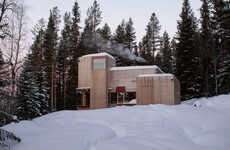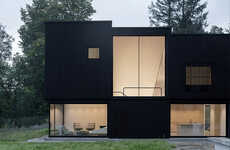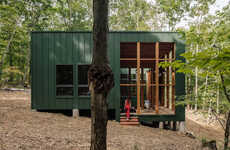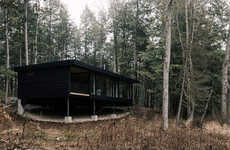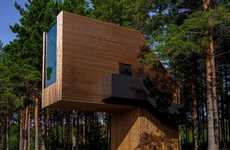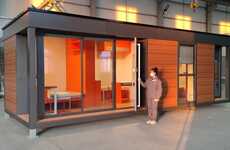
The Hus-1 Eco Home Blends into the Forest
Sarah Moore — June 20, 2012 — Eco
Designed by Swedish carpenter and architect Torsten Ottesjö, the Hus-1 Eco Home is a energy and cost-efficient home that makes a minimal impact on its surrounding environment.
The tiny abode is a mere 269 sq ft in size and can comfortably fit two people inside -- though having guests over for dinner may get a bit crowded.
It is constructed mainly from wood which has been tinted white with linseed oil and curved into a a variety of concave and convex shapes that closely resembles a large log from a tree. While the structure itself is stable and well-insulated, thanks to reinforced board framework, it maintains a lightweight and minimalist appearance.
Perhaps the most obvious downside is that the home appears to be missing an indoor bathroom, meaning one will have to shlep out into the Swedish elements to do their business.
The tiny abode is a mere 269 sq ft in size and can comfortably fit two people inside -- though having guests over for dinner may get a bit crowded.
It is constructed mainly from wood which has been tinted white with linseed oil and curved into a a variety of concave and convex shapes that closely resembles a large log from a tree. While the structure itself is stable and well-insulated, thanks to reinforced board framework, it maintains a lightweight and minimalist appearance.
Perhaps the most obvious downside is that the home appears to be missing an indoor bathroom, meaning one will have to shlep out into the Swedish elements to do their business.
Trend Themes
1. Eco-friendly Architecture - This trend presents opportunities for innovative sustainable building materials and designs.
2. Tiny Homes - There is a growing demand for compact and cost-efficient housing solutions.
3. Natural Integration - The integration of architecture into natural surroundings creates disruptive opportunities in the hospitality industry.
Industry Implications
1. Architecture - Architects and designers can explore eco-friendly and minimalist designs for sustainable homes and structures.
2. Construction - The construction industry can capitalize on the demand for cost-efficient and environmentally friendly building methods.
3. Hospitality - Hotels and resorts can create unique and immersive experiences by incorporating natural elements into their design and offerings.
6.4
Score
Popularity
Activity
Freshness

